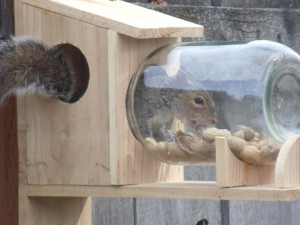Binoculars are used for everything from birdwatching to getting a closer look at lunar surfaces. There are many manufacturers of binoculars, and their quality can vary greatly from one brand to the next as well as from one model to the next. Before understanding the finer points of the best optical elements and coatings suited for specific uses, it is important to understand binocular magnification and aperture to determine which type is needed for the jobs the binoculars will be expected to perform.
Binocular Numbers
Two numbers are used to designate the power of binoculars. They are written with the letter “X” in between them. The number before the X is related to magnification. It is the number of times closer an object will appear in the field of view of the binoculars as opposed to viewing it with the naked eye. The second number is the aperture measured in millimeters. This refers to the width of what is called the objective lens. It is the big lens of binoculars and is important for capturing light coming from objects. Both work together to produce binoculars that are suited for tasks such as watching a sporting event or sky-watching at night.
Binocular Magnification
There is more to choosing the magnification power of binoculars than just picking the largest number before the X. A 7X magnification power means that an object viewed through the binoculars appears seven times closer. As the magnification increases, the field of view decreases. Magnification can get to be unwieldy in keeping viewed objects steady in the viewfinder. At larger magnifications, a tripod or other steady mount is needed just to keep objects from bouncing around when they are viewed. The slightest movement at high magnification powers results in large movements of an object being viewed through binoculars. A compromise must be made between being able to easily hold an object in view and getting the desired object close enough to be examined or identified.
Binocular Aperture
The aperture is the width of the front, or objective lens, of binoculars, measured in millimeters. Wider lenses have greatly increased total surface area. This is important for gathering the light that makes objects viewable, especially in dim light. Larger lenses can bring in more light to strike the ocular magnification lenses. These are the lenses one looks through when using binoculars. Bigger aperture objective lenses need bigger binocular housings, but larger binoculars do not mean more magnification power. Larger binocular apertures are needed for viewing objects in dim light. This could be game animals at dawn or dusk, or celestial objects throughout the night sky. At the same magnification, a larger aperture makes objects brighter when viewed through binoculars.
Field of View
As magnification increases, the field of view diminishes. Imagine viewing the 50-yard line of a football field from the bleachers to help understand field of view. As the magnification increases, the yard lines toward each goal post would disappear from the field of view when fixed on the 50-yard line. Increasing magnification brings objects on the field closer, but the area around the object being viewed gets smaller and smaller. High magnification can make distant objects appear much closer, but there must be a compromise depending on intended use. Binoculars with magnification that can get in close and tight to identify a small animal may be useless when glassing larger areas to identify landmarks or for search and rescue.
Balancing Magnification and Aperture
An important part in making a choice for what type of binoculars to buy is to decide what they will be used to view. It may be impossible to find one pair of binoculars that are suitable for all viewing occasions. Foe example, it would be a disappointment to attempt a bird-watching hike with a pair of binoculars of large aperture and high magnification normally used to view dim night sky objects. The binoculars would be too heavy to hold for long viewing periods in the field. Also, high magnification would make it difficult to find and track birds in trees. On the other hand, field binoculars that are recommended for birding do not have the light gathering capabilities needed to view faint galaxies in the night sky.
Variable Magnification Binoculars
Photography buffs know the value of prime lenses over variable (zoom) lenses. Prime lenses are of a fixed focal length. Zoom lenses can have their magnification changed at the turn of a dial or the press of a button. However, a certain degree of optical clarity and sharpness are compromised with variable focal length lenses. The same goes for binoculars that have variable magnification. Also, just as in photographic lenses, variable power binoculars can be much more expensive, especially for superior quality glass elements used in their construction. It may be better to buy two or more binoculars of a fixed power and aperture than to get one inferior variable power pair of binoculars.
It is important for those interested in purchasing the best pair of binoculars to consider what they will be used for. The service they will be put into is a great help in determining the appropriate magnification power and aperture size. More magnification and bigger apertures are not always the best. A pair of 7X20 binoculars can fit in a backpack or glove compartment. An 8×20 would increase magnification, keeping the binoculars the same general size. Increasing the aperture to an 8X42 size would make them much larger and heavier with no increase in magnification, but they would present a brighter image. Looking at the binocular size choices used by experts in birding, astronomy, hunting or whatever field the binoculars will be used in is helpful.













 These binoculars are made with premium optics, and the images I saw were as clear as day, if not clearer! Due to the fluoride and special, multi-layer glass, it was not even hard to see my targets right before it was completely dark outside. There is a coating on the lenses,
These binoculars are made with premium optics, and the images I saw were as clear as day, if not clearer! Due to the fluoride and special, multi-layer glass, it was not even hard to see my targets right before it was completely dark outside. There is a coating on the lenses,  In regards to the optical fields, depending on the size/model you’ve purchased, the Endeavor’s range will be average to fairly above average. Eye relief seems to also be above average but across all models. We also found the focus knobs to be rather sensitive but in a good way; the focus mechanism was still securely stiff and not too loose – as can be the case with other focus-sensitive binoculars. That way, the Endeavor is great for finding the ideal focus quickly and without inadvertently clicking past it.
In regards to the optical fields, depending on the size/model you’ve purchased, the Endeavor’s range will be average to fairly above average. Eye relief seems to also be above average but across all models. We also found the focus knobs to be rather sensitive but in a good way; the focus mechanism was still securely stiff and not too loose – as can be the case with other focus-sensitive binoculars. That way, the Endeavor is great for finding the ideal focus quickly and without inadvertently clicking past it.